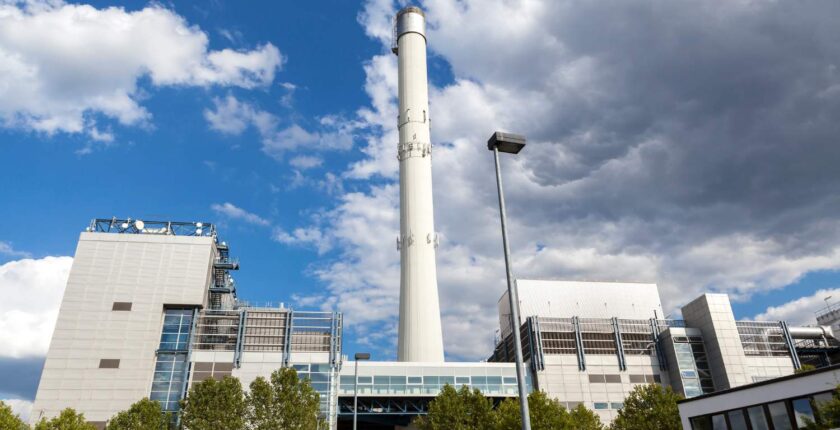Waste to Energy: Exploring Innovative Solutions in Disposal
Every day, individuals and businesses generate an immense amount of waste, much of which is discarded without a second thought. This waste, ranging from household garbage to industrial byproducts, forms a significant part of our daily lives, often overlooked once it leaves our sight. However, the journey of this waste, from being a mere discard to becoming a vital part of energy creation, is both fascinating and intricate.
The process of transforming garbage into energy is a complex and innovative journey, one that involves multiple stages and cutting-edge technology. At Seagull Disposal, we want to explore the intricacies of this process, shedding light on how everyday solid waste is converted into a valuable resource.
How Waste Has Increased Around The World
In recent years, there has been a global increase in the production of waste, driven by population growth, urbanization, and changing consumption patterns. This surge in waste generation has significantly strained existing waste management systems, emphasizing the need for more efficient and sustainable waste disposal methods. As our planet grapples with the repercussions of this increase, the demand for innovative and effective waste management solutions has never been higher.
One such solution is recycling, a process that involves converting waste materials into new products to prevent waste of potentially useful materials. Recycling reduces the consumption of fresh raw materials and lowers energy usage, air pollution, and water pollution. Another innovative approach is waste to energy technology, which involves converting non-recyclable waste materials into usable heat, electricity, or fuel. This method helps manage waste and contributes to energy production, showcasing a perfect example of turning waste into energy.
How Waste To Energy Works And What Are The Benefits?
Waste to energy is a process where various types of waste materials are used to generate energy. This process involves several methods, including combustion, gasification, anaerobic digestion, and landfill gas recovery. By utilizing these methods, companies like Seagull Disposal can convert waste products into energy, thus contributing to environmental conservation and energy sustainability.
Waste can be converted into energy in numerous ways. Some of the most common types of waste that can be converted into energy include:
- Waste Oil: Often discarded, waste oil can be repurposed to produce energy. This oil is refined and used as a fuel source in various industries through specialized processes.
- Organic Waste (food waste and animal products): These waste types, through processes like anaerobic digestion, can be broken down to produce methane, a potent energy source.

- Decomposed Anaerobic Bacteria: The decomposition of these bacteria releases biogas, which can be harnessed and used as a renewable energy source.
These are just a few of the many types of waste that could be turned into energy. The energy produced from waste comes in many shapes and forms. Some of the top examples include:
- Natural Gas: Waste decomposition often produces methane, which can be captured and used as natural gas.
- Heat: Through processes like incineration, waste materials can be burnt to produce heat, which in turn can be used for heating buildings or industrial processes.
- Biofuels: Organic waste can be converted into renewable biofuels that can replace traditional fossil fuels.
- Electricity: Many waste-to-energy processes generate electricity, which can then be supplied to the power grid.
By turning waste into energy, there are a number of major benefits we can enjoy. Some of the top examples include:
- Eco-Friendly: Using waste for energy production reduces greenhouse gas emissions and conserves natural resources.
- Reduce Waste: This method significantly reduces the volume of waste that would otherwise end up in landfills.
- Reduced Cost of Energy: Generating energy from waste can be more cost-effective than traditional energy sources, providing a financial benefit to consumers.

For all of these reasons, it is important to take advantage of every opportunity to recycle waste as a form of energy.
Innovative Technologies For Turning Waste Into Energy
The waste management industry has seen significant technological advancements to reduce waste’s impact and produce energy. These innovations range from sophisticated recycling processes to advanced waste-to-energy conversion techniques.
The machines and processes used for energy creation from waste are diverse and highly efficient. They include:
- Incineration: Incinerators are designed to burn organic material under high temperatures, effectively reducing waste volume and destroying harmful pathogens. The heat generated during this process is used to convert water into steam, which then drives electrical turbines to generate electricity, making it a key component in waste to energy technology.

- Digester: Digesters are specialized facilities that ferment organic waste under controlled conditions, such as food scraps and animal products. This fermentation process breaks down the material, releasing methane and carbon dioxide, which are then captured and converted into biogas, a clean and renewable energy source that exemplifies the concept of turning waste into energy.
- Fermentation: In the fermentation process, yeast and other microorganisms are used to break down organic waste, particularly carbohydrate-rich materials, into ethanol and carbon dioxide. Ethanol, a form of biofuel, is a sustainable alternative to fossil fuels, and this process highlights an innovative approach to sustainable waste disposal by converting waste products into valuable energy resources.
- Waste Oil Furnace: This process involves collecting waste oil, which could be from industrial or automotive sources, and subjecting it to filtration and heating. The heated oil is then used to generate heat, either for industrial processes or heating spaces, showcasing a practical and efficient method of recycling and energy production, aligning with the goals of sustainable waste disposal and waste to energy technology.
These are just a few of the top machines and processes that we can use to turn waste into energy.
How Seagull Disposal Uses Innovation To Power Your Community
The journey of waste is continuously evolving, thanks to ongoing innovations and technological advancements in the waste management sector. At Seagull Disposal, we are at the forefront of this evolution, integrating cutting-edge technologies and methods to transform waste into a valuable energy source.
We proudly use a waste oil furnace to heat our facility, reusing the oil from our garbage trucks in an exemplary demonstration of recycling and energy efficiency. This furnace, provided and installed by Peninsula Pressure Systems, a local company in Salisbury, Maryland, epitomizes top-notch innovation and commitment to sustainable practices.
Peninsula Pressure Systems, with their expertise and quality service, played a pivotal role in our journey towards sustainable waste management. Their collaboration in installing the waste oil furnace has enabled us to manage waste effectively and contribute to environmental conservation.
Join us in our commitment to a cleaner, more sustainable future. Sign up for Seagull Disposal’s residential service today and explore our range of services, including commercial, roll-off, junk removal, and compactor service.

